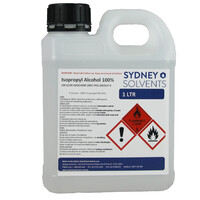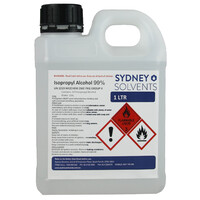70% vs 99%: Which Alcohol Is More Effective in Killing Germs and Viruses
Date Posted:2 August 2021


One common health myth is that the higher the percentage of alcohol, the more effective it is in killing germs and viruses. Unfortunately, this is not true.
One common health myth is that the higher the percentage of alcohol, the more effective it is in killing germs and viruses. Unfortunately, this is not true. When it comes to using alcohol as a disinfectant, the numbers don't always add up. Here is everything you need to know about the effects of the different concentrations of alcohol.
What is the difference between 70% and 99%?
When you say 99% Isopropyl alcohol, it means that the liquid is made up of pure isopropanol. An Isopropyl alcohol 70%, on the other hand, is pure isopropanol diluted with 30% purified water by volume.
70% isopropyl alcohol is enough to kill most germs and bacteria according to health experts. In fact, the SARS-2-CoV virus can easily killed by an Isopropyl alcohol 70 percent, or isopropyl alcohol 99 percent diluted to 70 percent with purified water.
How Does Alcohol Work?
Alcohol kills viruses and germs using a simple chemical process known as denaturation. Alcohol kills organisms by denaturing their proteins and dissolving their lipids.
Denaturation happens when alcohol molecules break down the proteins in the structure of the organism, regardless whether it’s a virus or bacteria. When the proteins are broken down, the structure becomes loose and the cells won’t function properly. The organism loses its membrane protection, causing it to dehydrate and quickly die. This process is the same thing that occurs when you wash your hands with soap and water.
The most commonly used alcohol-based sanitizers have either ethanol (ethyl alcohol) or isopropanol (isopropyl alcohol). Isopropanol is often referred to as rubbing alcohol while ethanol is chemically the same as your drinking alcohol.
Why is 70% a better disinfectant?
In terms of disinfecting, alcohols with higher concentration are less effective in killing germs, viruses, and bacteria. They are better eliminated with the use of a less concentrated isopropanol since higher concentrations can cause an external injury that builds a protective wall and shields these organisms.
99% alcohol also evaporates too quickly before it can even take effect. Because of this evaporation rate, the solution doesn’t have enough time to penetrate cell walls and kill bacteria. Hence, 99% alcohols are not good for sanitizing the hand and other surfaces.
On the other hand, 70% alcohol is the perfect balance of alcohol and water that allows the solution to cross the cell membrane and attack the entire cell, killing the bacteria in the process. This is true for most viruses and bacteria with an envelope structure, like the common cold virus and coronavirus. They can be broken down by alcohol solutions of 60% or higher.
Unfortunately, there are always exceptions to the rule. There are some organisms with viral structures which cannot be killed with any concentration of alcohol, like the norovirus. In this case, hand washing remains to be the most effective method for killing every form of virus and bacteria.
Comments (1)
J Aijqyr
22 July 2023Hi sydneysolvents.com.au administrator, You always provide great examples and case studies.

